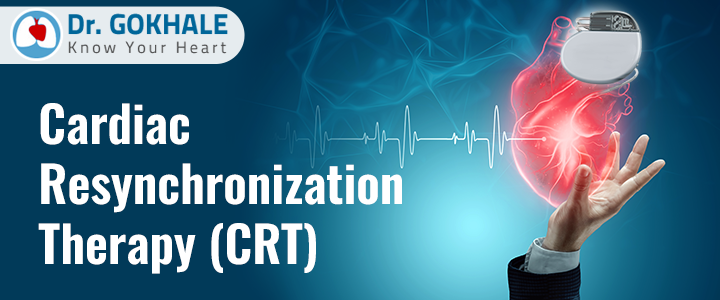A specialised treatment method called cardiac resynchronization therapy (CRT) treats heart failure that occurs in a few individuals. The goal of this advanced medical therapy is to increase the heart’s ability to pump blood and bring back synchronised contractions of the heart chambers.
Heart failure is a disorder where the heart muscle deteriorates, making it more difficult for the heart to circulate adequate blood throughout the body. Fatigue, shortness of breath, fluid retention, and a decreased capacity for activity are some signs of this. Heart failure occasionally also contributes to arrhythmias or abnormal heartbeats.
How does CRT Work?
If you are planning to go for cardiac surgery in Hyderabad, make sure you have rudimentary knowledge about the process. In patients with heart failure and electrical conduction disorders, CRT synchronises the contraction of the heart’s chambers, especially the left and right ventricles.
Biventricular pacemakers or defibrillators, which provide electrical impulses to the heart to regulate its pumping function, are implanted during this procedure. Cardiac failure patients might experience an interruption in the timing and coordination of their cardiac contractions, which CRT tries to correct.
In heart failure, the heart’s capacity to pump blood effectively is impaired, resulting in symptoms including exhaustion, breathlessness, and intolerance to physical activity. CRT helps increase cardiac output and reduce symptoms by better synchronising the heart’s contractions. Thin cables called leads are positioned in particular places inside the heart during the CRT treatment.
The pacemaker or defibrillator device, typically placed beneath the skin in the chest or belly, is attached to these leads. The system keeps track of the electrical activity of the heart and sends the ventricles precisely timed electrical impulses, coordinating their contractions and increasing pumping effectiveness.
Effectiveness of CRT
- Improved Cardiac Function: CRT aids in restoring the synchronisation of the heart’s chambers, especially the ventricles, which results in better pumping performance. CRT can enhance cardiac output and overall heart function by synchronising heartbeats to increase the volume of blood pumped with each beat.
- Relief of Symptoms: As per top cardiac surgeon in India, patients undergoing CRT frequently report decreased heart failure symptoms, including tiredness and activity intolerance. As symptoms lessen, people can better go about their everyday lives and experience a higher quality of life.
- Exercise Tolerance: It has been demonstrated that CRT improves patients with heart failure’s ability to tolerate exercise. Individuals receiving CRT may enjoy greater capacity for exercise due to better cardiac function and increased heart pumping capacity.
- Reverse Ventricular Remodelling: CRT may cause the heart’s size, shape, and functionality to reverse or change over time. Better results and a lower chance of developing heart failure are linked to this reversal of unfavourable remodelling.
Consider visiting Dr Ghokhale, the first surgeon in Telangana and Andhra Pradesh to do heart transplants if you are thinking about Cardiac Resynchronization Therapy (CRT) and want professional advice. Dr Ghokhale is considered one of the best cardiac surgeons in Hyderabad and has great knowledge of CRT and its advantages for patients with heart failure and electrical conduction problems due to his significant expertise in the field.














